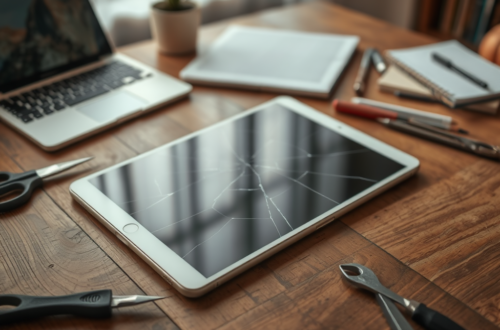In this guide, we’ll walk through the process of safely discharging a 12V battery, ensuring that we avoid reaching dangerously low voltage levels that could damage the battery. Discharging a battery means releasing its stored energy until it arrives at what is known as a ‘low voltage disconnect’ point, a situation where the battery automatically disconnects to prevent further discharging and protect its health. Whether you’re a seasoned DIY enthusiast, a professional mechanic, or just someone looking to take care of your vehicle or electronic equipment, this article will cover how to discharge your battery efficiently and safely while paying close attention to the 12v battery low voltage disconnect threshold.
Understanding Battery Discharge
The concept of battery discharge encompasses the transformation of chemical energy within the battery into electrical energy usable by various devices. Proper discharge is essential as it helps maintain the battery life and preserves its ability to hold a charge. To further elaborate, let’s look at the different types of 12v batteries and their discharging characteristics:
- Lead-Acid Batteries: Common in vehicles, these batteries demand discharge to a point that respects the low voltage disconnect 12v circuit specifications to prevent ‘memory effect’ and sulphation.
- Lithium-Ion Batteries: Found in modern electronics, they benefit from periodic full discharge cycles to ensure precise calibration but feature protective circuits to safeguard against overly depleting the battery, often called a low voltage battery disconnect.
- Nickel-Cadmium Batteries: Once widely used in rechargeable devices, they must be frequently discharged completely to sidestep memory effect.
It’s critical to understand these types since the approach to discharging each can vary widely. Acknowledging these differences is essential for maintaining your battery effectively and without causing unintentional damage.

Safety Precautions
There’s no understatement when emphasizing safety during the handling of lead-acid batteries, which can contain dangerous acids and emit explosive gases. Here’s a list of initial steps for a safe discharging process:
- Always ensure that the workspace is well-ventilated.
- Remove jewelry or loose clothing that could potentially short-circuit the battery.
- Have a basic emergency response kit at hand, including baking soda and an eye wash station, for any incidental spills or exposures.
Personal protective equipment is crucial. Proper safety gear such as goggles and acid-resistant gloves should be worn during the operation. Ensure the room is airy enough as batteries can emit hazardous gases during the discharge process, which qualify as harmful if inhaled in concentrated volumes.
Considering environmental safety is just as important. Batteries should be discharged in a space clear of any flammable materials and have a process for the safe disposal of any waste. Make sure your work area is dry to avoid any short circuits or other electrical hazards.
Preparing to Discharge
The keys to a successful battery discharge lie in proper preparation. Here’s a checklist to ensure you’re ready:
- Identify the battery type you have and its nominal voltage.
- Assemble all necessary equipment, including safety gear and discharge tools.
- Review the manufacturer’s guidance regarding safe discharge practices, including low voltage battery disconnect points.
Following these steps will set the stage for a safe and effective discharge of your 12V battery.
Discharging the 12v Battery
The discharge process for a 12V battery goes beyond merely using up the stored power. It is critical to understand the specifications around capacity, ideal discharge rates, and cutoff voltage points to prevent damage.
For the manual discharge process, you may use a resistive load such as bulbs designed to bring the battery to its low voltage disconnect 12v circuit level in a controlled manner. It is essential to continuously monitor the battery voltage to prevent it from dipping below the safe threshold, generally advised to be no lower than 10.5 volts.
Alternatively, a discharge device can be employed to streamline the process. Such devices are designed with a 12v battery low voltage disconnect feature, triggering a cutoff to prevent over-discharging. Using such a device would typically follow these steps:
- Attach the discharge device appropriately to the terminals, respecting proper polarity.
- Set the cutoff voltage based on the manufacturer’s instruction to align with the battery’s low voltage disconnect feature.
- Allow the device to run until the battery reaches the predetermined low voltage battery disconnect point and the device automatically stops the discharge.
| Step | Action | Consideration |
|---|---|---|
| 1 | Connect load or discharge device | Ensure correct polarity |
| 2 | Set low voltage disconnect threshold | Check manufacturer guidelines |
| 3 | Activate device | Monitor for automatic shutoff |
| 4 | Observe the discharge process | Do not allow voltage to fall too low |
Monitoring the discharge is a pivotal part of the discharging process. It is not only about safeguarding the battery from damage due to excessive voltage drop but also about maintaining your safety during the procedure. Especially when you’re bypassing automatic cutoffs, vigilance is necessary to ensure a smooth and controlled discharge.
As we’ve worked through this first section, we’ve established the imperative knowledge base required, got our space ready for the task, and kicked off the discharging operation. Let’s halt our discussion here and prepare to delve into the more advanced topics and steps in the latter half of the guide. Remember, good preparation and a focus on safety are the best ways to ensure the longevity and reliability of your 12V batteries.

Post-Discharge Steps
After your battery has been discharged to the appropriate low voltage battery disconnect point, there are several imperative measures that need to be taken to ensure the battery remains in good condition and is ready for its next use. Firstly, inspect the battery for any signs of physical damage or leaks which may have occurred during discharge. Secondly, it’s important to recharge the battery promptly after discharge to avoid the buildup of lead sulfate, which can be detrimental to battery health, especially in lead-acid types.
Here’s a general procedure to help you get started with recharging:
- Connect the battery to a quality battery charger that is appropriate for the 12V battery type.
- Set the charger to the correct voltage or select the battery type, if the charger has this feature, to ensure a proper charge cycle.
- Keep an eye on the charging process, and once the battery is fully charged, disconnect the charger to avoid overcharging, which can be as damaging as over-discharging.
With the battery safely recharged, it’s also advisable to conduct a load test if possible, to confirm that the battery can still perform under normal operational demands. Additionally, if the battery is not going to be used immediately, store it in a cool, dry place away from direct sunlight to prevent any unnecessary loss of charge.
Battery Maintenance Tips
Regular maintenance checks can significantly prolong the life of your 12V battery. Ensuring that the terminals are clean and free from corrosion, checking the electrolyte levels in lead-acid batteries, and verifying the battery’s resting voltage are all critical steps in battery care. Here’s a maintenance checklist:
- Clean battery terminals with a wire brush and protect them with anti-corrosion gel.
- Keep the battery at a stable temperature to avoid extreme temperature exposure.
- Use a smart charger that prevents overcharging and maintains an optimum charge level, especially if the battery isn’t used regularly.
By implementing these practices, you’ll maximize the lifespan of your battery and avoid the need for frequent replacements or unexpected failures.

Conclusion
Properly discharging a 12V battery is a critical aspect of battery maintenance and care. It’s a process that requires attention to detail, safety precautions, and an understanding of the battery’s operating characteristics. By following the steps outlined in this guide, and using the correct equipment like a 12V low voltage disconnect, you can safely discharge your battery without causing it harm.
FAQs
Q1: Can completely discharging a 12v battery damage it?
A1: Yes, completely discharging a 12v battery, particularly to a voltage below its designed cutoff, can cause irreversible damage such as sulfation in lead-acid batteries, which reduces its lifespan and capacity.
Q2: How do I know if my 12v battery low voltage disconnect is working?
A2: You can test your low voltage disconnect by monitoring the battery voltage during discharge. If the disconnect is working, the battery will cease to power your device or the discharger will shut off at the designated voltage.
Q3: Is it necessary to discharge a 12v lithium-ion battery fully?
A3: No, lithium-ion batteries have a built-in protection circuit to prevent full discharge because they can be severely damaged if their voltage drops too low. A full discharge is generally not necessary for routine maintenance.
Q4: How often should I discharge my 12v battery?
A4: The frequency of discharging a 12v battery differs based on battery type and usage but generally, it should align with the manufacturer’s recommendations. For some batteries, periodic discharging can help calibrate battery sensors.
Q5: What should I do if my battery voltage drops below the 12v battery low voltage disconnect point?
A5: If your battery accidentally drops below its low voltage disconnect point, you should immediately recharge it to minimize damage. However, if the voltage drops significantly below this point, the battery might be permanently damaged and require replacement.
Remember that battery care is not just about following procedures; it’s about understanding the needs of your battery type and making accommodations for its maintenance and longevity. Through proper care, you can ensure that your batteries remain reliable and efficient for as long as possible.





